After years of working at a newspaper, my uncle Jeff quit his job to follow his true passion: preaching. My aunt Connie commissioned me to draw him an image of a tree with strong roots for his 50th birthday.
This kind of assignment is rough for me, because I’m not a fine artist. For the kind of drawing and cartooning I practice, drawing isn’t just a drawing, it’s more like picture-writing. It’s about writing with symbols…either conveying some kind of information or telling a story.
The biggest problem was that I was trying to be clever by using a cross for the tree trunk:

I almost drove myself crazy trying to get it to look recognizable.
And so, after endless drafts, I learned a valuable lesson:
Don’t try to be clever. Just draw.
As Faulkner put it, “Kill your darlings.”
I threw the cross idea out the window, and went with what I love to do: tell a story in a series of simple pictures.
The bonus of all this was that the tree I drew as the “final” in the series turned out to be the best one I came up with:
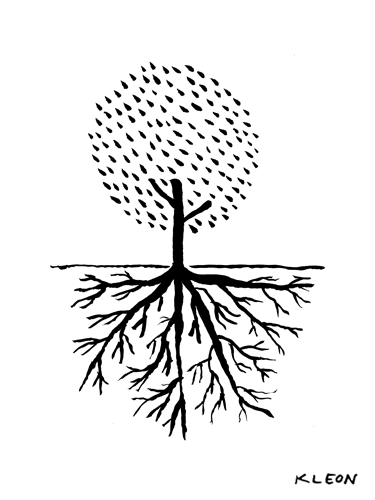
So Meg and I headed off and got a three-panel frame:
Voila! A tree triptych.
A couple of days later, I learned another valuable lesson: Do some research.
Had I been more thorough with my Googling, I might have found Bruno Munari’s book, Drawing A Tree:
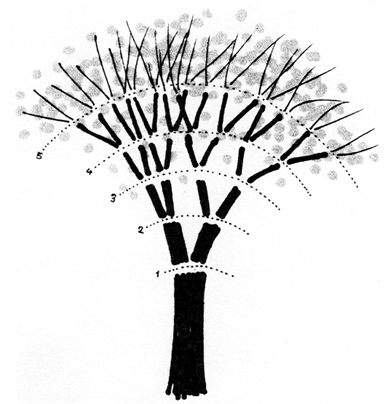
A tree is a slow explosion of a seed….When drawing a tree, always remember that every branch is more slender than the one that came before. Also note that the trunk splits into two branches, then those branches split in two, then those in two, and so on, and so on, until you have a full tree, be it straight, squiggly, curved up, curved down, or bent sideways by the wind.
You draw, you learn.
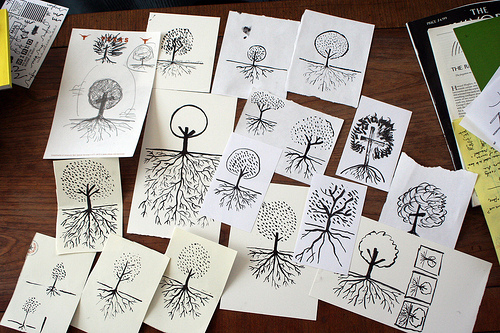
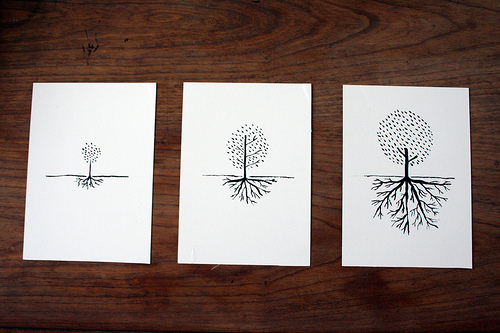
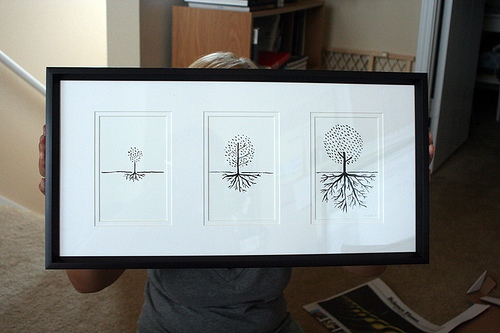
I think your advice can be applied to many creative areas:
“Don’t try to be clever. Just _________.”
I have to keep this in mind when writing copy. You can work so hard on being clever that it totally misses the point and will go right over the audience’s head.
I do love how the trees turned out, beautiful job!
Thanks, Sara! I think you’re right: it applies to all disciplines.
I was going to suggest Y trees like Munari draws. :^)
Austin – Great post – LOVE your trees, and your narrative of how they came about.
I think you should be thankful, certainly without regret, that you did not come upon Munari’s book before you drew, else you might have drawn – or tried to draw – his trees rather than your own.
Once you have your trees, you come to new information – such as Munari – differntly, and generally speaking, more receptive.
Research is good, sure.
All too often “designed” or premeditated education / learning processes put Exemplification and Explaination before Exploration and Experience. In doing so, they greatly curtail, if not eliminate, the possibility of surprise and emergence of something new and novel.
Thanks for a post. I like where it has taken my mind and mood.
Todd: Thanks, man. I hadn’t thought of it that way!
The Drawn & Quarterly store in Montreal had a copy of the Munari book. It looked good.
I applied your ideas to drawing trees and finally I’m a pro, I tried not to think to hard but to just let myself draw, and it definitely improved myself as an “artist”
Glad to hear it, Ellie!